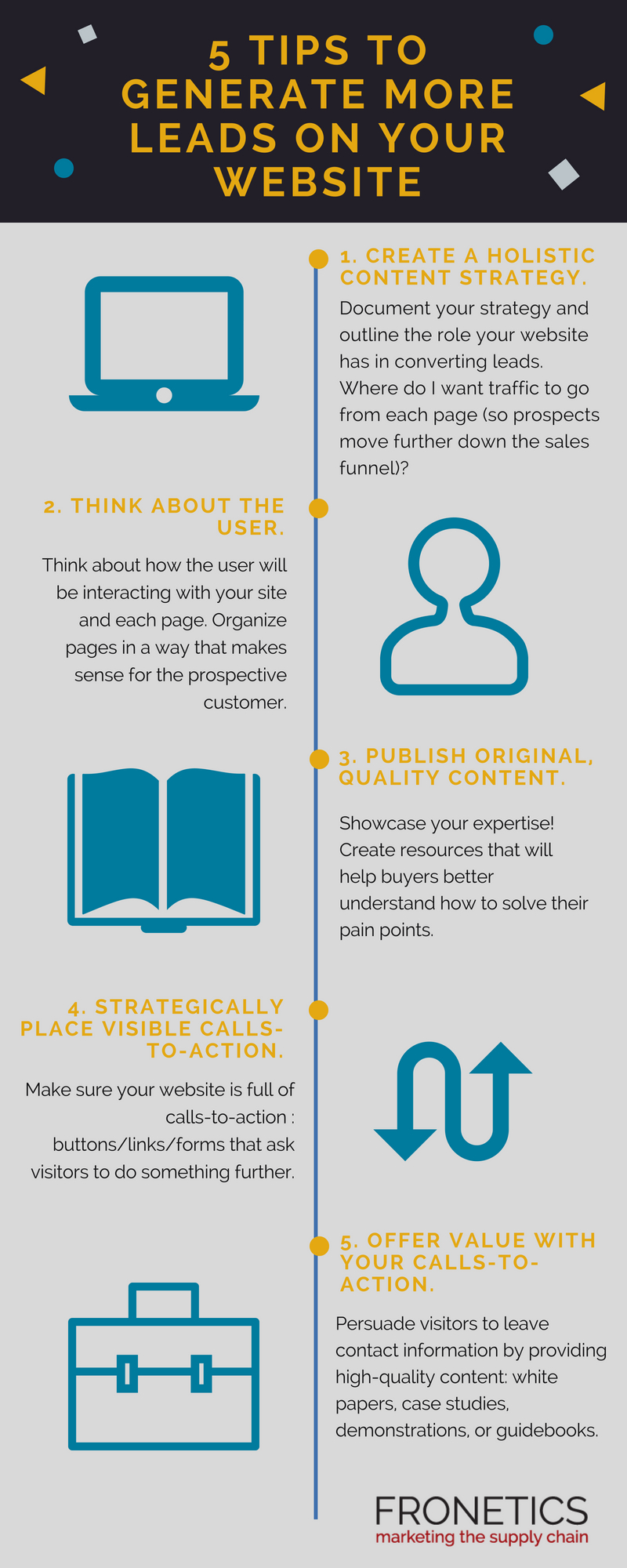
by Fronetics | Jun 28, 2018 | Blog, Content Marketing, Current Events, Marketing, Social Media
Also in social media news June 2018: Instagram released ranking criteria for its algorithm, Apple expands advertising businesses with a new network for apps, and Facebook is cracking down on new requirements for custom target audiences.
Summer is in full swing, and so are the most popular social media platforms. Facebook, Instagram, Snapchat, and even Apple are rolling out updates to make their platforms more user- and, more importantly, business-friendly. After a rocky spring with the Facebook scandal, social media apps are working overtime to make their relationships with businesses more transparent and overall user experiences more personalized.
[bctt tweet=”After a rocky spring with the Facebook scandal, social media apps are working overtime to make their relationships with businesses more transparent and overall user experiences more personalized.” username=”Fronetics”]
With transparency on the forefront, this month’s social media news is heavy with social media apps making updates that increase user privacy and subsequently, increase user engagement. Here’s what’s happening with your favorite platforms this month.
Here’s your social media news for June 2018.
Facebook enforces new requirements for custom target audiences
Facebook has released new requirements for advertisers creating custom audiences from user files. Advertisers will now have to identify where their audience’s information was obtained when they create new customer files. “Starting July 2, we will require advertisers to specify the origin of the audience’s information when a business uploads a new audience. When uploading a customer file, advertisers will need to indicate whether the information was collected directly from people, provided by partners, or a combination of the two,” writes Facebook. These new updates will help advertisers provide more transparency for users and increase advertising efficiency.
Google increases transparency over Google Ads
Google rolled out new settings to its ad features, making it clearer to users how Google Ads are customized specifically to them. Google is also sharing why users see certain ads by introducing “Why this ad?”, a new link that appears on ads. “The new Ad Settings and updates to Why this ad? provide you with more transparency and control over your Google ad experience than ever before. With these improvements, you can browse the web confidently knowing that you have the information and control to make Google work better for you.”
Instagram announces criteria for its algorithm
Instagram revealed the three most important factors that feed into its algorithm to determine which posts appear in a user’s feed. According to TechCrunch these factors include: interest, recency, and relationship. After ditching its ranking system in 2016 for an advanced algorithm, Instagram now says the new system has contributed to the platform’s soaring popularity, allowing users to see 90% of their friends’ posts.
Apple expands advertising business with new network for apps
Apple is looking to grow its advertising business by working with social media apps to distribute ads across their collective platforms. “Apple would share revenue with the apps displaying the ads, with the split varying from app to app,” MarketWatch shares on its website. Apple is hoping these partnerships will increase its advertising business by selling promotional ads in its App Store.
Facebook is expanding ads to include Marketplace
Facebook’s Marketplace is a part of Facebook that allows users to buy and sell products and recent updates allowed businesses to get in on the action. Facebook’s newest update allows businesses to purchase product ads that will appear in the Marketplace along with similar products and services. The ads have been tested among specific brands in the past few months and the results show increased purchases and year-over-year returns on ad spending. “Thread Wallets, an accessories company, generated more than 300 purchases while increasing its year-over-year return on ad spend by 41% after adding Marketplace as a placement for its conversions campaigns,” writes Facebook on its business site. In the coming weeks, advertisers targeting audiences in the U.S. and Canada can start using Marketplace ads.
Instagram introduces long-form video
Until now, all Instagram videos were limited to one minute, and Stories were limited to 15 seconds. But the Wall Street Journal reports that Instagram is looking to expand into long-form video, up to one hour in length. Though this hasn’t been confirmed by Instagram or Facebook, the WSJ writes the expansion will initially only be available in vertical video, meaning a video shot by a phone camera or on a computer, but eventually the app could include production videos and even programming.
Related posts:


by Jennifer Hart Yim | Jun 27, 2018 | Blog, Content Marketing, Logistics, Marketing, Supply Chain, Talent
Millennials are breaking stereotypes across the industry. This new generation is bringing youth, better education, and lots of diversity to supply chain management.
This guest post comes to us from Argentus Supply Chain Recruiting, a boutique recruitment firm specializing in Supply Chain Management and Procurement.
Everyone knows that the demographics of the Supply Chain industry are changing. They have to. Within a few years, demographers estimate that 400,000 baby boomers will be retiring in Canada every year. Within the Supply Chain industry, the looming – and in fact, already-started – retirement of baby boomers and shifting job responsibilities brought about by technology are creating a talent crisis.
It’s something that we’ve covered extensively at Argentus. We’ve written about how the industry can fill the burgeoning gap in talent: by increasing educational opportunity, doing more outreach to young people, and improving communication about the vast career potential in the field – a field that until recently was stereotyped as transactional, hidebound and, in a word, boring.
Today’s Supply Chain professionals know that – especially at the highest levels – the field is anything but. And it looks like some of these efforts to avert the talent crisis have begun to bear fruit: a major new survey shows that millennials are moving into the workforce in a big way, changing its Supply Chain’s demographics and disrupting the industry.
The survey, conducted by Peerless Research Group, Supply Chain Management Review, APICS and APQC surveyed 676 millennials (between the ages of 22 and 37) in April 2017 to find out about their demographics, expectations, goals and current career status within the Supply Chain industry. It’s a far-reaching report with a lot of results busting down stereotypes both about Supply Chain and millennials themselves.
As a recruitment company specializing in Supply Chain and Procurement, Argentus sits at the nexus of a lot of these demographic changes. Needless to say, we read the report with great interest. Here were some of our biggest, and most surprising, takeaways.
Takeaways from Apix survey on millennials in supply chain.
Careers are becoming more intentional:
- When we speak with SCM professionals from the baby boomer and Gen X generations, it’s really common for us to hear, “I didn’t plan on going into Supply Chain, but I fell into it.” But this tendency is changing. The report found that 75% of millennials in Supply Chain jobs intentionally began their careers within the field.
- Planning and Procurement are taking on a bigger role in the field: 22% of millennials surveyed are working in Planning and 21% in Procurement, compared to 15% in Logistics, 11% in Inventory Management, and 9% in Manufacturing.
Supposed “Job Hoppers” are actually staying put:
- We’re maybe a ways past the 2008-2014 heyday of stereotyping millennials in the workforce. Companies are realizing millennials’ huge value as employees. With that in mind, the report still dispels some classic stereotypes about millennials in the workforce. There’s a perception that millennials are “job hoppers” who don’t have loyalty to their employers, but the survey found that 38% of millennial respondents have worked for just one employer their entire career. 65% had worked for their current employer for more than 5 years.
Educational opportunities are taking off:
- One of the biggest growth areas in the field is the increasing prevalence of educational opportunities as more universities and colleges bring SCM programs online. 66% of the millennials surveyed have either undergraduate or graduate degrees in Supply Chain or Logistics. APICS conducted a similar survey in 2016 – this time of senior leaders in the field – and found that only 19% of the leaders surveyed had degrees in the field, which suggests that millennials are taking advantage of these increased educational opportunities.
- 59% of the millennial supply chain employees surveyed have a bachelor’s degree of some kind, even if it’s not in Supply Chain or Logistics. The 2016 leadership survey found that only 45% of Supply Chain leaders had degrees. It’s worth mentioning that more companies are requiring degrees these days for sole contributor roles, so this might be a response to that market pressure.
- Millennials are interested in continuing education in the field, suggesting it’s not just a fly-by-night career for them. 65% of the survey respondents indicated that they were planning on pursuing further education in the next 12 months.
The gender gap is chainging, but persistent:
- More women are entering the Supply Chain field. 61% of the survey respondents were men, whereas 39% were women. It’s still not as close to even as it should be, but the breakdown was more evenly split than APICS 2016 leadership survey mentioned above: in that survey of Supply Chain leadership, 76% of respondents were male and only 24% were female. This indicates that more millennial women are entering the field than their Gen X and baby boomer counterparts. It also indicates that, as we’ve written about before, more needs to be done to bring women into Supply Chain leadership
- There’s still a stubborn gender pay gap in the field, even for millennial employees. The average compensation for male respondents was $92,920, while it was only $78,840 for women in the cohort. The survey found that men and women generally start off with equitable compensation, but the gap grows – as it does in many other fields – as they move up into more senior roles.
Millennials expressing a high degree of career satisfaction:
- On the job satisfaction front, there were some absolutely massive numbers that speak to the way the field is becoming more flexible and dynamic: 85% of millennials surveyed said that they were likely to be still working in Supply Chain in 5 years. 81% said they felt as if they could make a difference in the Supply Chain field. 85% said they agreed that the field was a diverse workforce, and 87% said that they thought working in the field would help with personal growth and development.
[bctt tweet=”87% of millennials surveyed thought working in supply chain management would help with personal growth and development.” username=”Fronetics”]
It’s exciting to see the way the field is growing and adapting to change, and the way that millennials are stepping up and reaping some of this career’s rewards. We encourage you to check out the full report. There’s a lot to dig into beyond the takeaways we’ve identified here – lots of insights that will be interesting to anyone who’s interested in the way Supply Chain careers are taking off in the 21st century.
Related posts:


by Fronetics | Jun 26, 2018 | Blog, Content Marketing, Logistics, Marketing, Strategy, Supply Chain
More and more supply chain marketers are realizing the benefits of inbound marketing (over outbound marketing) including cost savings and increased lead generation.
Marketers are constantly coming up with new and trendy ways to attract leads. With endless platforms available to us, it can be overwhelming for even the most seasoned marketers to know where they need to focus their efforts.
In order to find the right solutions for your supply chain marketing needs, you first have to understand the difference between inbound and outbound marketing. And more importantly, how they can help — or hinder — your marketing efforts.
Outbound marketing
Outbound marketing describes any marketing approach that pushes a message onto a buyer. Traditional marketing — tv and radio ads, telemarketing, banner and display ads — are all examples of outbound marketing.
Another name for this marketing tactic is interruption marketing, as it typically tries to take “attention away from what your buyer is doing and bring it, forcibly, on to your product or service.”
Inbound marketing
Inbound marketing focuses on audiences finding you. Instead of pushing a message onto buyers, inbound marketing allows you to establish your brand as an industry leader and let interested audiences come to you. This type of marketing attempts to draw in potential customers through interesting and engaging content.
Content marketing is a type of inbound marketing. Examples include blog posts, social media, infographics, white papers, and videos.
Why is inbound marketing better for the supply chain?
Outbound marketing used to be the ‘go to’ for generating leads, but this is simply no longer the case. Marketers across industries have found that inbound marketing has many advantages over traditional marketing practices. In fact, almost three-quarters (68%) of inbound organizations believe their marketing strategy is effective, while more than half (52%) of outbound marketers don’t believe their strategy is effective.
[bctt tweet=”Marketers across industries have found that inbound marketing has many advantages over traditional marketing practices. In fact, almost three-quarters (68%) of inbound organizations believe their marketing strategy is effective.” username=”Fronetics”]
Here’s why we think inbound marketing is better for supply chain marketers than outbound marketing.
Video: Why supply chain marketers need inbound marketing
Related posts:


by Elizabeth Hines | Jun 25, 2018 | Blog, Content Marketing, Logistics, Marketing, Social Media, Strategy, Supply Chain
Aiming to deliver value outside the sales funnel allows your business to build long-term relationships with customers, rather than focusing on a single sale.
Congratulations! You closed the deal. You hammered out the terms and set up the billing. But, according to marketing experts Mark Bonchek and Vivek Bapat, now the real work of growing revenue begins.
Successful 21st century businesses focus on what happens after they close a sale, not the transaction itself. That’s because consumers — and B2B customers — have higher expectations than ever before. They read reviews, listen to webinars, and download white papers before they buy, and they expect a better experience after.
Purchase brands vs. usage brands
Bonchek and Bapat describe two types of brands: “purchase brands” and “usage brands.” The usage brands “focus on the moments of truth that happen after the transaction, whether in delivery, service, education or sharing.” As a result, they command greater loyalty and higher prices than competitive brands that are content to end their relationship with an invoice.
[bctt tweet=”Suppliers need to shift focus from persuading people to buy, to persuading them to become a committed advocate for their brand.” username=”Fronetics”]
What does that mean for you as a supplier? You need to shift your focus from persuading people to buy, to persuading them to become a committed advocate for your brand.
“Be” the B2B customer
B2B accounts are complicated. They have many decision makers and many points of contact. You may have a sales team with multiple reps and sales support people on one account.
With so much going on, it’s important to “be” the customer. Try to identify and understand the people who depend on your product or service to get their work done every day. Those are the people you need to impress.
“What is the likelihood that you would recommend Company X to a friend or colleague?” According to Bain & Company, this is the one question that most closely correlates to customer satisfaction. “High scores on this question correlated strongly with repurchases, referrals and other actions that contribute to a company’s growth.”
And what makes people recommend a product or service? Success while they’re using it.
Social media: An important part of the B2B relationship
Bonchek and Bapat say, “The purchase and usage mindsets are equally, or even more, relevant for B2B brands. Business solutions tend to have longer life cycles than consumer products and there is an even greater opportunity to deliver value outside the sales funnel.“
So yes, you may have to tweet. And stay present on LinkedIn. Because your customers look there to follow trends and find good information to help run their businesses. Industry forums, YouTube, and Instagram are also great places to provide value beyond the sale.
Don’t worry if you’re not a creative genius. Most of us aren’t. Do try to talk about issues that are relevant and maybe even unsettling to your industry. If your customers are having a problem, chances are other businesses have the same concerns and vice versa.
You probably have an opinion, maybe even a solution. Use social media to share it with a larger audience, your users will thank you for it.
How do you deliver value outside the sales funnel?
Related posts:


by Fronetics | Jun 21, 2018 | Blog, Content Marketing, Logistics, Marketing, Supply Chain
If you’re looking to generate more leads on your website, you need to create opportunities to capture visitors and implement a strong content strategy to encourage engagement.
Lots of supply chain and logistics companies are catching on to the benefits of content marketing. And of those, many are implementing a content marketing strategy to plan and execute their marketing.
[bctt tweet=”There’s no point in pouring a bunch of time, money, and resources into a robust content marketing program if the website that you’re driving traffic to stinks.” username=”Fronetics”]
But there’s an issue a lot of supply chain and logistics companies are running into: a weak website that doesn’t encourage the generation of leads. Essentially, there’s no point in pouring a bunch of time, money, and resources into a robust content marketing program if the website that you’re driving traffic to stinks.
In a recent post, we talk about what a weak website looks like. If you think you may fall into this category, don’t fret. There is still time to generate more leads on your website.
Consistently producing quality content and making sure you’re utilizing various distribution channels — social media, a blog, etc. — will help draw your target audience to your website. Once they’re on your site, you need to make sure they have a positive user experience. And more importantly, they need ample opportunities to learn more about your products and services.
These opportunities to engage with your content help move users down the sales funnel. You’ll capture leads that have the potential to become sales.
So how do you ensure your website is a lead-generating machine? Here are five tips to generate more leads on your website.
Infographic: 5 tips to generate more leads on your website

(Made with Canva)
Most importantly, remember to be prudent about the role your website plays in the lead-generation process. A strong website with quality content, great visuals, and easily identifiable calls-to-action only works to generate leads and push users down the sales funnel. You’ll still need someone to help close the deal.
Related posts:


by Elizabeth Hines | Jun 19, 2018 | Blog, Content Marketing, Current Events, Logistics, Manufacturing & Distribution, Marketing, Supply Chain
Tesla has been long-favored to lead the charge in the mass adoption of EVs, but recent challenges have halted production. Can the Tesla become the next Honda Accord before they run out of money?
Plug-in electric passenger cars achieved a market share of only 1.16% of all car sales in 2017. That’s tiny. Some predicted 2018 might be the “year of the electric car,” but sales aren’t expected to break 2% this year.
[bctt tweet=”The auto industry is betting billions that electric vehicles will soon be as “cheap and ubiquitous as conventional cars.”” username=”Fronetics”]
Nearly all experts believe, however, that change is indeed coming. The auto industry is betting billions that electric vehicles (EVs) will soon be as “cheap and ubiquitous as conventional cars.” Some projections put electric vehicle sales over 20% by 2025. Others are more cautious and predict a slightly delayed rise to 25% by 2030. If the industry hits those numbers, it will be a boon to the electronics industry, as the number of cars with electronic components and the number of electronic components in each car grows by leaps and bounds.
Tesla has been long-favored to lead the charge in the mass adoption of EVs. But production of the company’s Model 3, the carmaker’s attempt at a mass-market sedan, has had major challenges, including issues with its supply chain. Can Tesla beat the ticking clock before the massive influx of money dries up?
Tesla’s ticking clock
Tesla is racing to overcome obstacles that have slowed the Model 3 progress, and the company’s make-or-break moment is fast approaching. The carmaker must boost production of the Model 3, or they will run out of money by the end of the year.
Since going public in 2010, Tesla has burned through an estimated $10 billion. Last year alone, Tesla spent more than $3.4 billion in cash — almost $1 billion a quarter — largely to bring production and sales of the Model 3 to sustainable levels.
Earlier this month, Tesla revealed that it nearly hit its target to manufacture 5,000 Model 3s a week, a production goal that is necessary to generating enough cash in house to sustain its own operations. Without it, the automaker will need to raise even more capital from outside investors.
Everyone expects that Tesla could, in fact, raise more funds if necessary. But proving it can build Model 3s at the thrice-promised target rate would go a long way in securing it.
The issues working against EVs
Even without its production issues, Tesla and other electric-vehicle manufacturers have their fair share of roadblocks.
The biggest issue to the supply chain? Electric-car battery manufacturing depends on the supply of certain minerals, including cobalt and lithium. As demand increases, these raw materials are increasingly scarce. Manufacturing is literally running into a metal crunch.
The biggest logistical issue? There are currently not enough places to re-charge.
Where exactly will we charge all those electric cars we plan on buying? Experts say that simply duplicating the existing refueling system, where motorists “charge up” like they “gas up” today would likely require dozens of new power plants or massive new investments in solar and wind farms.
The biggest issue to the American consumer? Battery-powered cars still cost more. Until that changes, consumers will still have a reason — a big reason — to go for more traditional gas-powered vehicles.
Could the Model 3 become the next Honda Accord?
So, even with all these current issues, could the Model 3 still be the highest-selling car of the next 40 years?
Tesla may still have a fighting chance if:
- they can solve their production issues;
- the battery market can find alternatives to its raw-materials shortage;
- the American public can feel confident that their batteries won’t die on the highway;
- the cost of EVs can rival that of traditional vehicles
Admittedly, that is a lot of “ifs,” but somehow no one is REALLY doubting that Tesla will pull it all off. But, not yet. A study last year found that 70% of millennials don’t yet want an electric car. Huh. Electric cars have mystique but simply don’t yet have widespread appeal.
Even taking these surprising stats into consideration, that still means 30% of young buyers consider an electric vehicle even now. So, by 2025 or 2030, when all the kinks are ironed out, they just may be as vanilla as Honda Accords. Except that the Model 3 is gorgeous, and electric, and made by Tesla. So maybe more like vanilla with rainbow sprinkles.
This post originally appeared on EBN Online.
Related posts:












